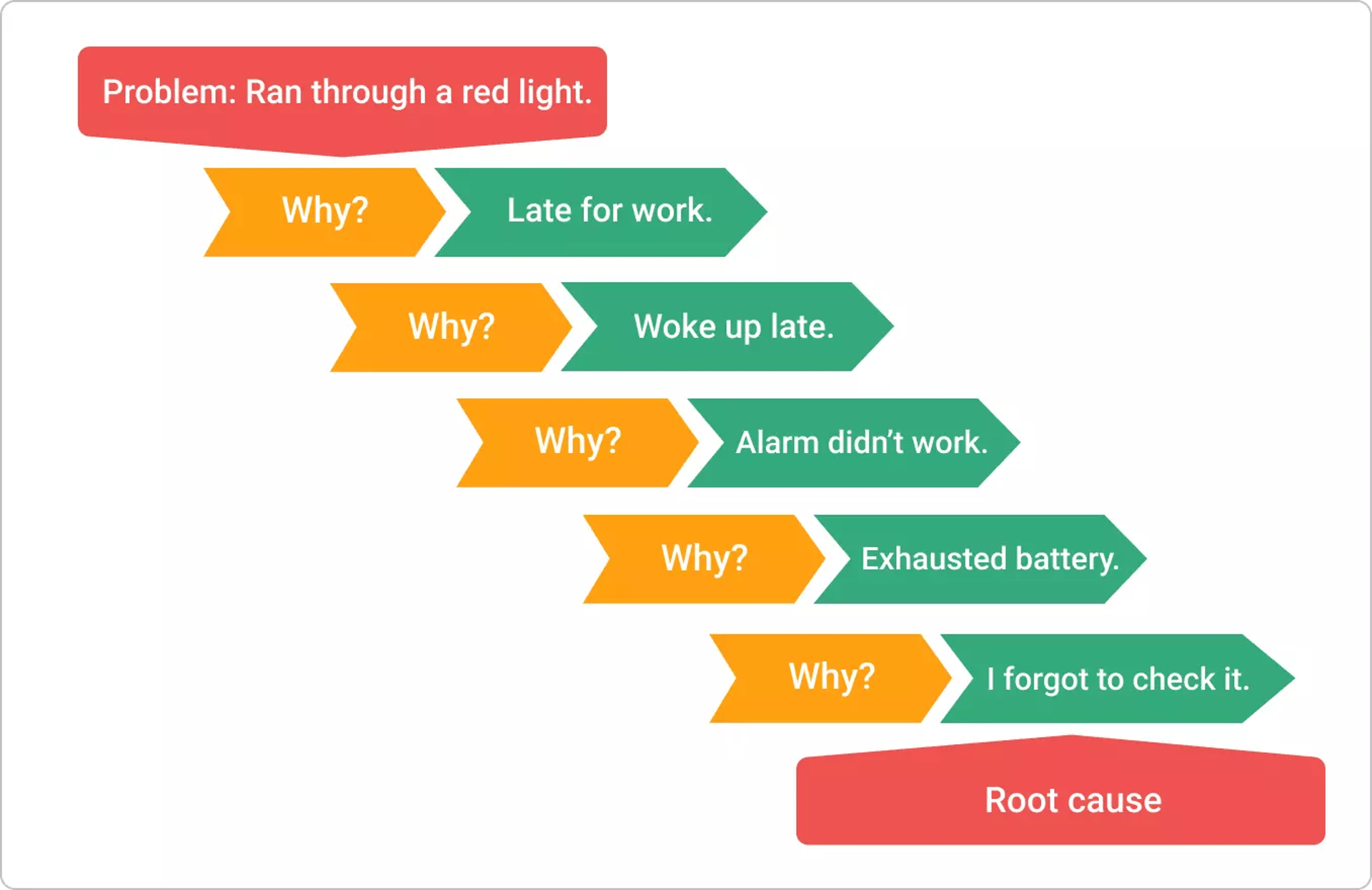
The 5 Whys is a foundational problem-solving technique in Lean methodology. Its purpose is to help teams identify the root cause of an issue by repeatedly asking "why" until they uncover the true source of the problem. By addressing the root cause rather than the symptoms, teams can create lasting solutions that prevent recurring issues and improve processes over time.
What Are the 5 Whys?


Want to Learn more about 5 Why's
Lean Construction Institute
The Lean Construction Institute is a valuable resource for understanding the 5 Whys, a cornerstone of Lean problem-solving practices. This platform brings together insights from thought leaders and industry experts to explore strategies for identifying and addressing root causes of issues on construction projects. Through detailed articles, the blog highlights the importance of the 5 Whys technique—encouraging teams to ask "why" repeatedly to uncover the deeper sources of inefficiencies or recurring problems. By focusing on this method, the Lean Construction Institute provides practical guidance on how to apply the 5 Whys to reduce waste, enhance workflows, and drive sustainable improvements in construction processes.
Lean Enterprise Institute
The Lean Enterprise Institute offers a thorough explanation of the 5 Whys, emphasizing its role in uncovering root causes and driving continuous improvement. The site provides actionable guidance on applying this problem-solving method effectively, making it an essential resource for individuals and teams addressing recurring issues. Additionally, it connects readers to a wealth of resources, including articles, tools, and expert insights, to deepen understanding of Lean methodologies and the practical application of the 5 Whys in fostering efficiency and eliminating waste.
5 Whys funnel Illustrated (Image source: lean construction Institute)
How Does the 5 Whys Work?
The process is simple yet impactful: when faced with a problem, start by asking "why" it happened. Each answer provides insight and leads to the next "why," creating a logical progression toward uncovering the core issue. While the name suggests asking “why” five times, the actual number of questions may vary depending on the complexity of the issue.
For example, imagine a delay in construction:
Why was the task delayed? The crew didn’t have the necessary tools.
Why didn’t they have the tools? The delivery was late.
Why was the delivery late? The supplier didn’t have the order ready on time.
Why wasn’t the order ready? The request was submitted past the deadline.
Why was the request late? The project manager wasn’t informed of the need early enough.
By tracing the problem back to its root, this approach reveals areas in communication and planning that need improvement.
The Purpose of the 5 Whys
The ultimate aim of the 5 Whys is to address the root cause of issues to prevent their recurrence. This practice supports Lean principles by fostering a proactive mindset and encouraging teams to think critically about processes. It ensures that solutions are not just quick fixes but are designed for long-term impact and continuous improvement.
When to Use the 5 Whys
The 5 Whys is particularly useful for solving process inefficiencies and performance gaps. It is most effective when:
Defining a specific problem that affects performance or outcomes.
Analyzing unexpected issues to determine their origins.
Developing actionable countermeasures to improve processes.
Establishing long-term solutions that eliminate inefficiencies.
The Benefits of the 5 Whys
Ease of Use:
The technique is straightforward and requires no specialized tools or expertise.
Clarity:
It focuses on understanding processes instead of assigning blame.
Critical Thinking:
Encourages logical reasoning to uncover deeper insights.
Sustainability:
Promotes solutions that address systemic issues, reducing waste and inefficiency.
Practical Applications in Lean Construction
In Lean construction, the 5 Whys can be applied to various challenges, from delays and safety incidents to resource management and workflow bottlenecks. By integrating this method with practices like Gemba walks or Plan-Do-Check-Act (PDCA) cycles, teams can build a robust framework for continuous improvement and waste reduction.
The 5 Whys isn’t just a problem-solving tool; it’s a way of thinking. By asking “why” repeatedly and digging deep into the origins of an issue, teams can uncover hidden problems and create solutions that are both effective and sustainable. This approach empowers Lean practitioners to address inefficiencies head-on and foster a culture of growth, collaboration, and continuous improvement.
5 Whys Playlist
The 5 Whys Explained - Root Cause Analysis (8:25)
Five Whys Jefferson Memorial Example (1:30)
Explore this video playlist about the 5 whys


